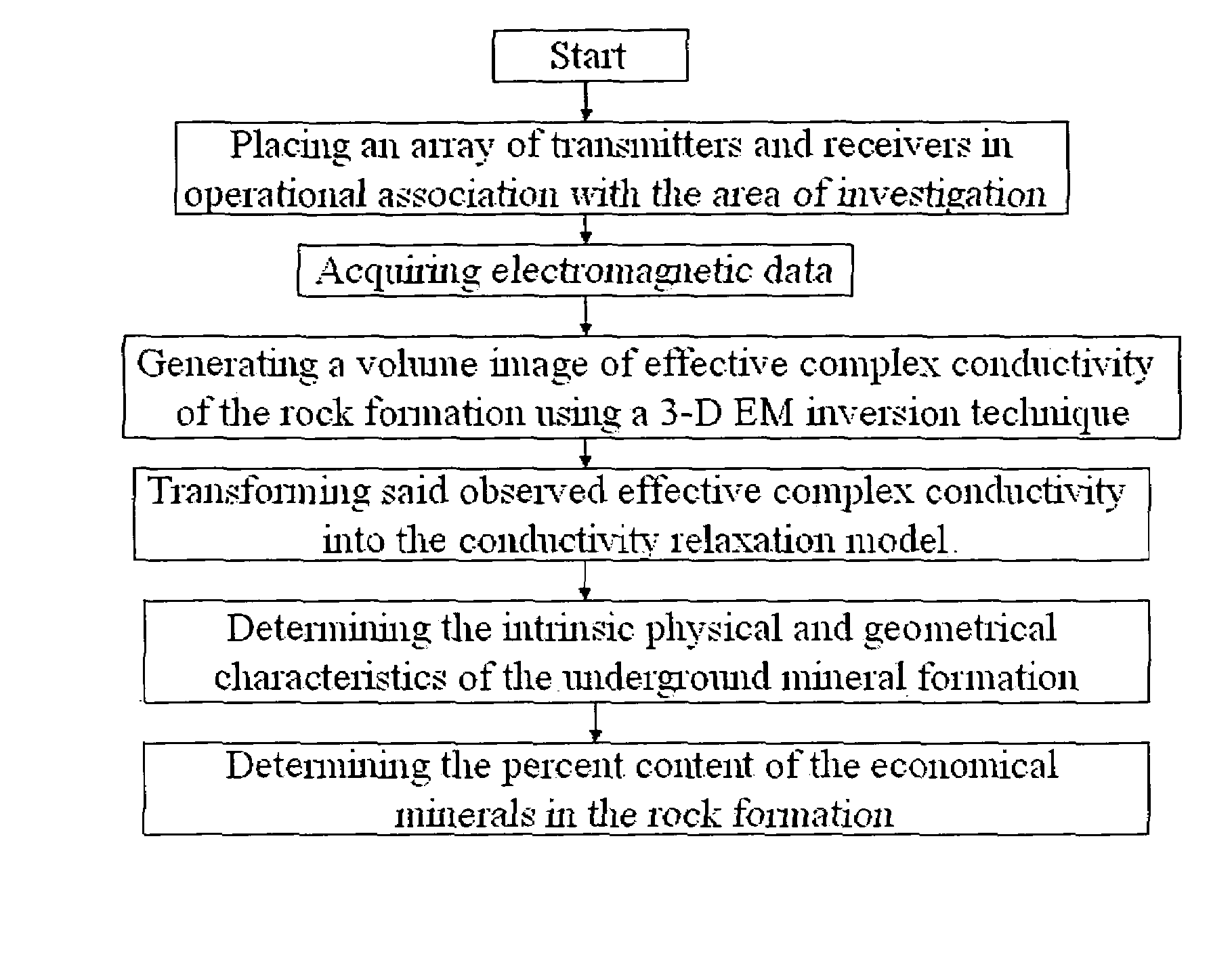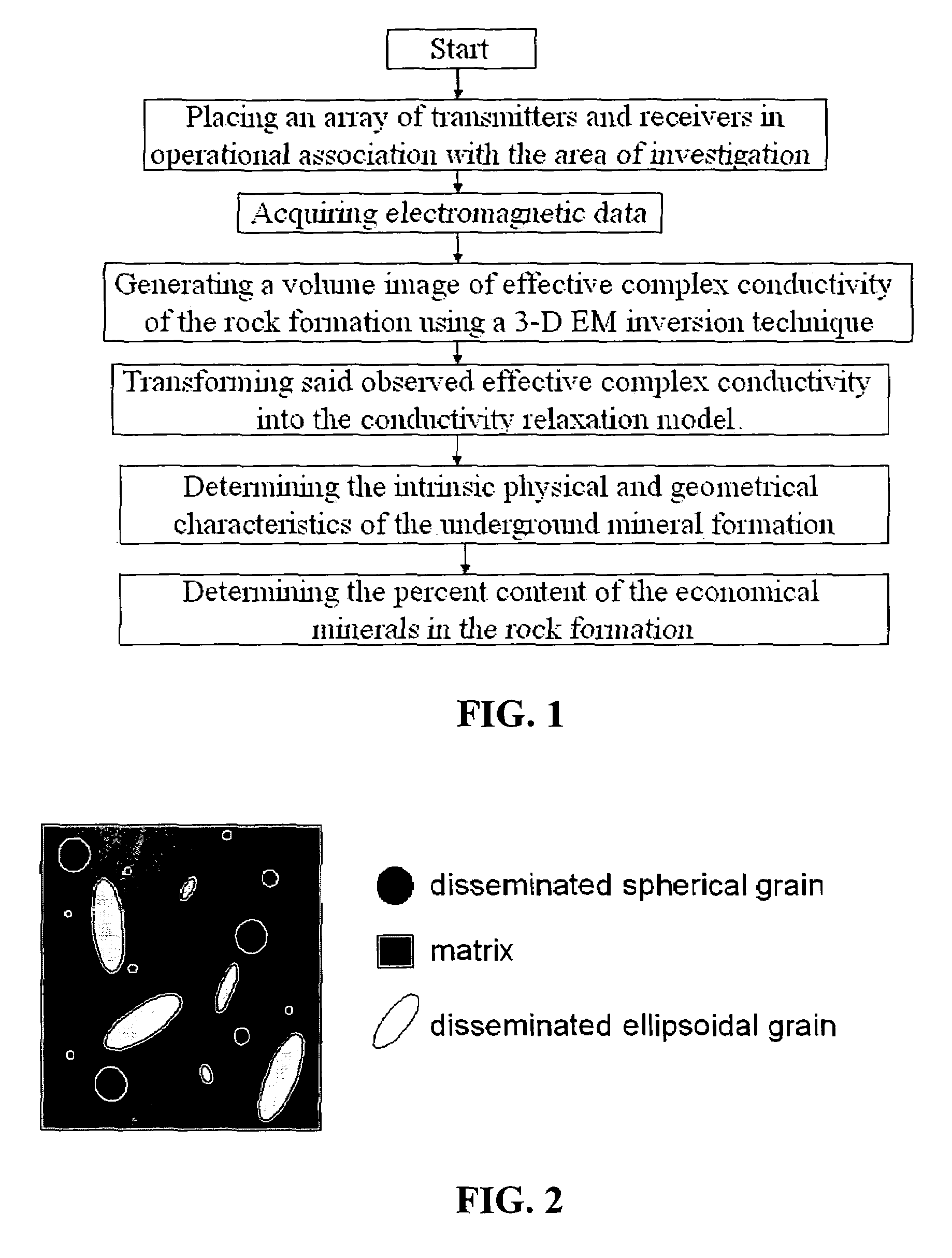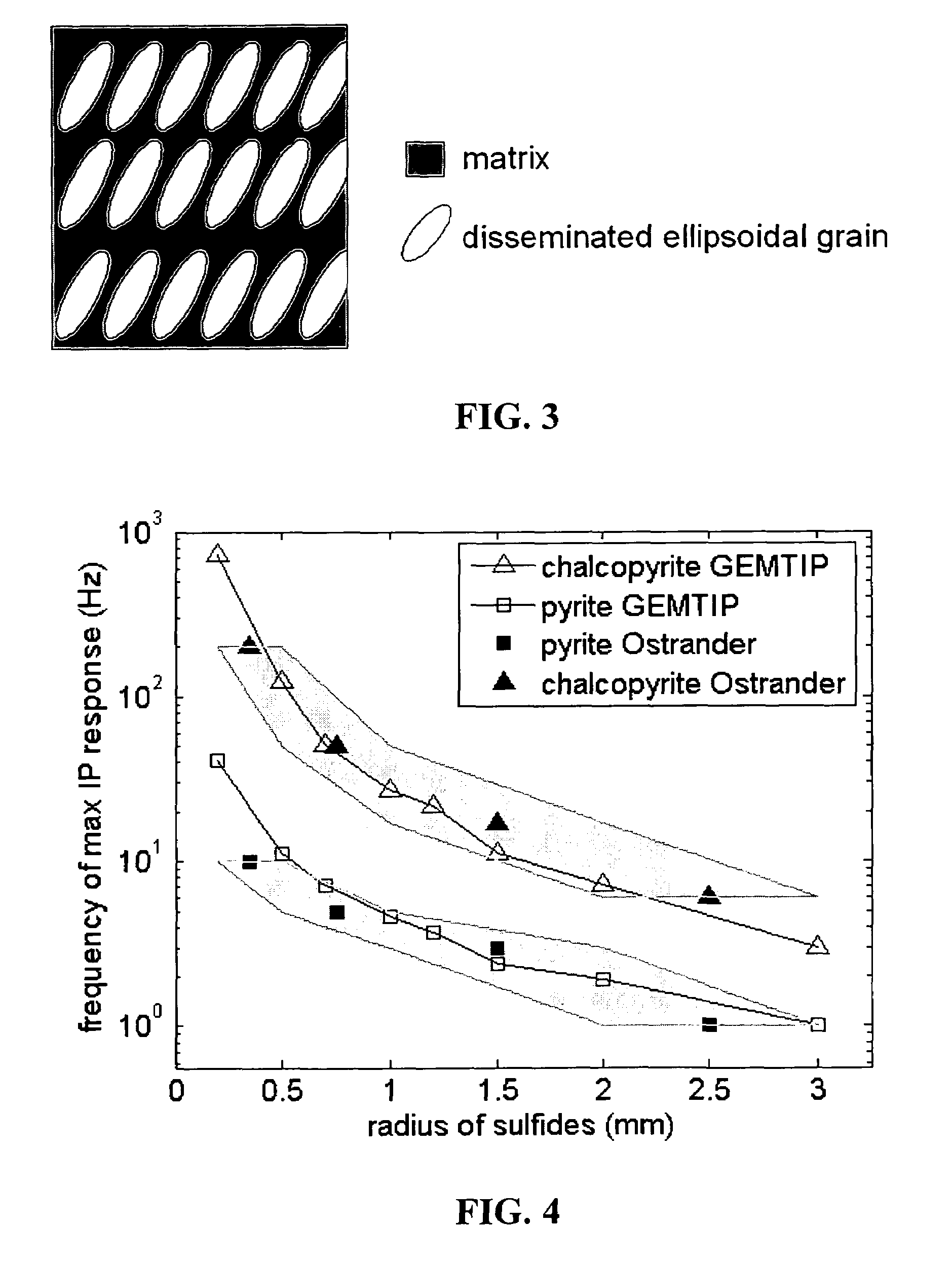Geophysical technique for mineral exploration and discrimination based on electromagnetic methods and associated systems
a geophysical method and electromagnetic technology, applied in the field of electromagnetic geophysical methods of remote sensing, can solve the problem of challenging quantitative interpretation of ip data in a complex 3-d environmen
- Summary
- Abstract
- Description
- Claims
- Application Information
AI Technical Summary
Benefits of technology
Problems solved by technology
Method used
Image
Examples
example 1
[0086]Consider first a composite model with isotropic grains of arbitrary shape. In this case all conductivities become scalar functions:
{circumflex over (σ)}0=Îσ0,Δ{circumflex over (σ)}l=ÎΔσlp=(Î={circumflex over (p)}l)Δσl.
Therefore, assuming σb=σ0:
{circumflex over (σ)}e=Îσ0+Σl=1N[Î+{circumflex over (p)}l]−1[Î−(Î+{circumflex over (p)}l)Δσl{circumflex over (Γ)}l]−1[Î+{circumflex over (p)}l]Δσlfl. (38)
[0087]It can be demonstrated that if the grains have nonisometric shape (e.g., ellipsoidal shape) but random orientation (see FIG. 2), averaging of the tensor terms in expression (38) will result in scalarization. Therefore, the effective medium conductivity will become a scalar function. However, if all the grains are oriented in one specific direction, as shown in FIG. 3, the effective conductivity of this medium will become anisotropic. Thus, the effective conductivity may be a tensor in spite of the fact that the background medium and all the grains are electrically isotropic.
example 2
[0088]In another embodiment of the present invention, an isotropic multi-phase composite model formed by a homogeneous host medium of a volume V with a conductivity σ0 filled with grains of spherical shape is considered. Assuming also a set of N different types of grains, the lth grain type having radius αl, conductivity σl, and surface polarizability kl. In this model, both the volume and the surface depolarization tensors are constant scalar tensors equal to:
[0089]Γ⋀l=ΓlI^=-I^13σbI^,Λ⋀l=ΛlI^=23σbalI^.(39)
The corresponding tensor formulas for conductivities, tensors {circumflex over (m)} and {circumflex over (q)}, can be substituted by the scalar equations. For example, assuming σb=σ0, the following scalar formula for the effective conductivity of the polarized inhomogeneous medium is obtained:
[0090]σe=σ0+∑l=1N[1-(1+pl)ΔσlΓl]-1Δσlfl.(40)
Substituting expression (39) for volume depolarization tensor, an expression for the effective resistivity of the composite polarized ...
example 3
[0098]The new composite conductivity model introduced in this invention has been compared with the practical results of Ostrander and Zonge's 1978 study of chalcopyrite and pyrite bearing synthetic rocks with known matrix resistivities. Ostrander and Zonge (1978) have constructed synthetic rocks bearing either pyrite or chalcopyrite at specific grain sizes using a cement (matrix) of known resistivity. They have also measured the frequency of the peak (maximum) IP response of each rock sample. FIG. 4 presents the results from this study plotted as the solid squares (pyrite) and solid triangles (chalcopyrite). Results from the analytical GEMTIP model of this invention are plotted using the solid line and open symbols. The range of grain sizes for each measurement of maximum IP response is indicated by the grey shading.
[0099]For example, the pyrite synthetic rock plotted at 2.5 mm contains pyrite grains from 2 mm to 3 mm. FIG. 4 shows a good correlation between the theoretical analytic...
PUM
 Login to View More
Login to View More Abstract
Description
Claims
Application Information
 Login to View More
Login to View More - R&D
- Intellectual Property
- Life Sciences
- Materials
- Tech Scout
- Unparalleled Data Quality
- Higher Quality Content
- 60% Fewer Hallucinations
Browse by: Latest US Patents, China's latest patents, Technical Efficacy Thesaurus, Application Domain, Technology Topic, Popular Technical Reports.
© 2025 PatSnap. All rights reserved.Legal|Privacy policy|Modern Slavery Act Transparency Statement|Sitemap|About US| Contact US: help@patsnap.com



